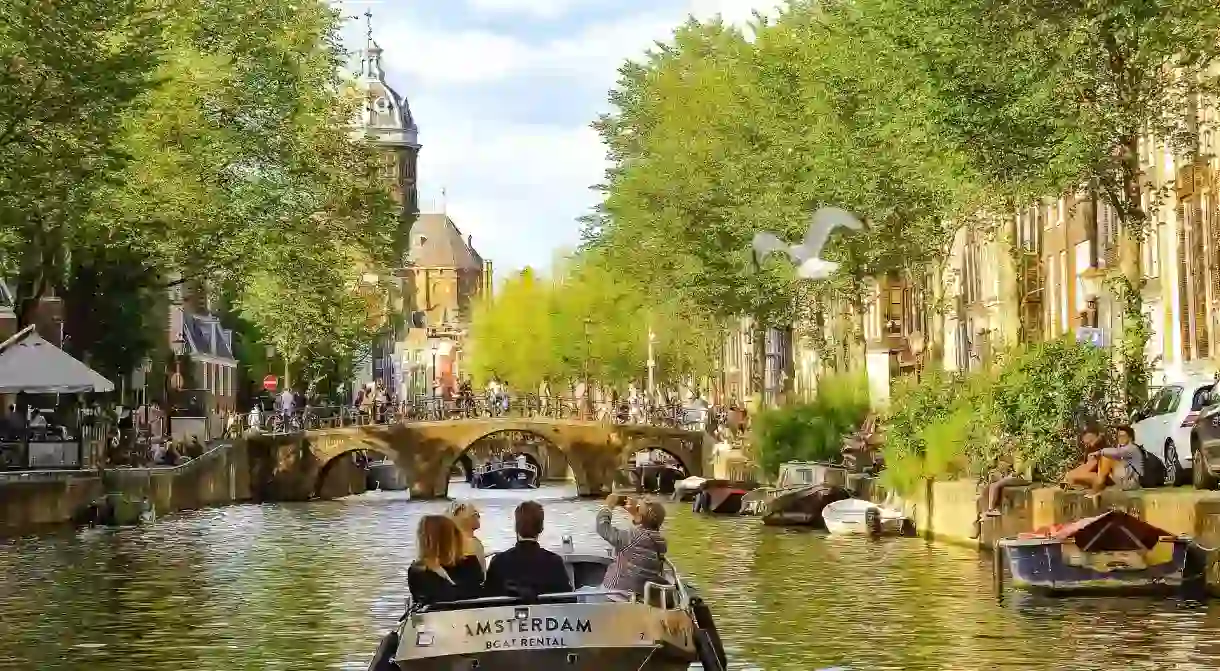17 Things You Didn't Know About Amsterdam

Ever wondered why Amsterdam is called Amsterdam? Or how many bikes are actually present in the city? If so, then read on to discover the answer to these pressing questions as well as 15 other facts related to Amsterdam.
Bikes outnumber humans
Current estimates suggest that there are around 880,000 bikes in Amsterdam meaning that there about 30,000 more bicycles in the city than humans.
There are a lot of cycle paths
Amsterdam is fully adapted around two-wheeled transportation and approximately two thirds of all journeys inside the city are taken by bike. Its bike path network currently cover over 400 km of ground and is still expanding.
There’s even a cycle path inside the Rijksmuseum
The underpass that runs underneath the Rijksmuseum was originally designed to accommodate trams but has since been converted into an awesome cycle path. In fact the Rijksmuseum is the only museum in the world to feature an internal bike path.

Every year thousands of bikes end up in the canals
For one reason or another between 12,000 to 15,0000 bikes wind up in Amsterdam’s canals every year. In order to keep the city’s waterways clear of bicycles and other debris Amsterdam’s municipality regularly dredges the canals with a massive boat-mounted claw.
Amsterdam was built around a dam
As its name suggests, Amsterdam developed around a dam that connected the eastern and western banks of the river Amstel. This important construction was built during the 13th century and eventually became completely landlocked due to other nearby waterworks.
Most of the city is below sea level
As much of Amsterdam lies several metres below sea level, many parts of the city are built on artificial islands. Centraal Station, for example, stands upon three manmade mounds that were reclaimed from the river IJ in the late 19th century.

Around one third of Amsterdam Centrum is an UNESCO World Heritage Site
A considerable portion of Amsterdam’s Centrum neighbourhood is protested by UNESCO as a World Heritage Site. This area contains the city’s famous 17th-century canal belt which itself houses over 1000 national monuments such as Westerkerk, Anne Frank Huis and FOAM.
Amsterdam’s Royal Palace wasn’t always owned by royalty
Although the stately buildings on the western side of Dam Square is now known as the Royal Palace, it wasn’t always associated with aristocracy and was originally owned by Amsterdam’s city council. After serving as a town hall for around 150 years, the building was converted into a palace by Louis Napoleon in 1806 during France’s brief reign over the Netherlands and then bequeathed to the royal House of Orange around a decade later.

Amsterdam is the capital of the Netherlands, but not North Holland
Whilst Amsterdam is the largest city in the country and the capital of the Netherlands, it isn’t the provincial capital of North Holland. Instead the nearby city of Haarlem has served as the capital of North Holland province since the early 19th century.
The origins of Amsterdam’s coat of arms are a mystery
Although historians have proposed several theories, nobody knows for certain what the three St. Andrew’s Crosses on Amsterdam’s coat of arms represent. Some people claim that the Xs symbolise the three main dangers associated with living in the city during earlier times, namely: floods, fire and the black death, whilst others affirm that these emblems were adapted from the heraldic shield of an old noble house from North Holland called the Persijn family.

Most Amsterdammers are bilingual
Most people in Amsterdam speak fluent English and often know several other languages besides Dutch. It is actually pretty common for Dutch people outside Amsterdam to understand English, partly because the two languages are closely related.
It has the only floating flower market in the world
Flower traders have congregated in Amsterdam for centuries and usually transported their bulbs or plants via the city’s canal network. This led to the creation of a floating flower market which has been moored to the banks of Singel canal since 1862.
And the only floating cat shelter
Amsterdam’s Singel canal also features the only floating cat shelter in the world which is contained within a modified houseboat. This aquatic sanctuary has looked after stray or abandoned kitties since the 1960s and always appreciates donations from cat lovers.

Thousands of wild parakeets live in Amsterdam
According to recent surveys there are around 4000 wild rose-ringed parakeets living in Amsterdam. Although these green birds originate from considerably warmer parts of the world such as the Indian sub-continent or equatorial Africa they also thrive in northern-European cities and quickly multiply in built-up areas.

Herons are pretty common
Grey herons are common in Amsterdam and are well adapted to city life. Groups of these lanky birds tend to converge around local markets during closing time in order to scavenge for fresh fish and other tidbits.
So are crawfish
A few decades ago crawfish started to appear in Amsterdam canals and there currently an unknown number of these small, lobster-like creatures living in the city. During heavy rain it is fairly common for young crawfish to emerge from the water and scuttle about nearby streets.
An anonymous sculptor has been installing work across the city since the 1980s
Over the past 30 years an unknown individual (or group) has mounted at least eight statues in Amsterdam. These anonymous artworks include a tribute to sex workers on Oudekerkpelein and a literally groundbreaking sculpture of a violinist inside Stopera.














